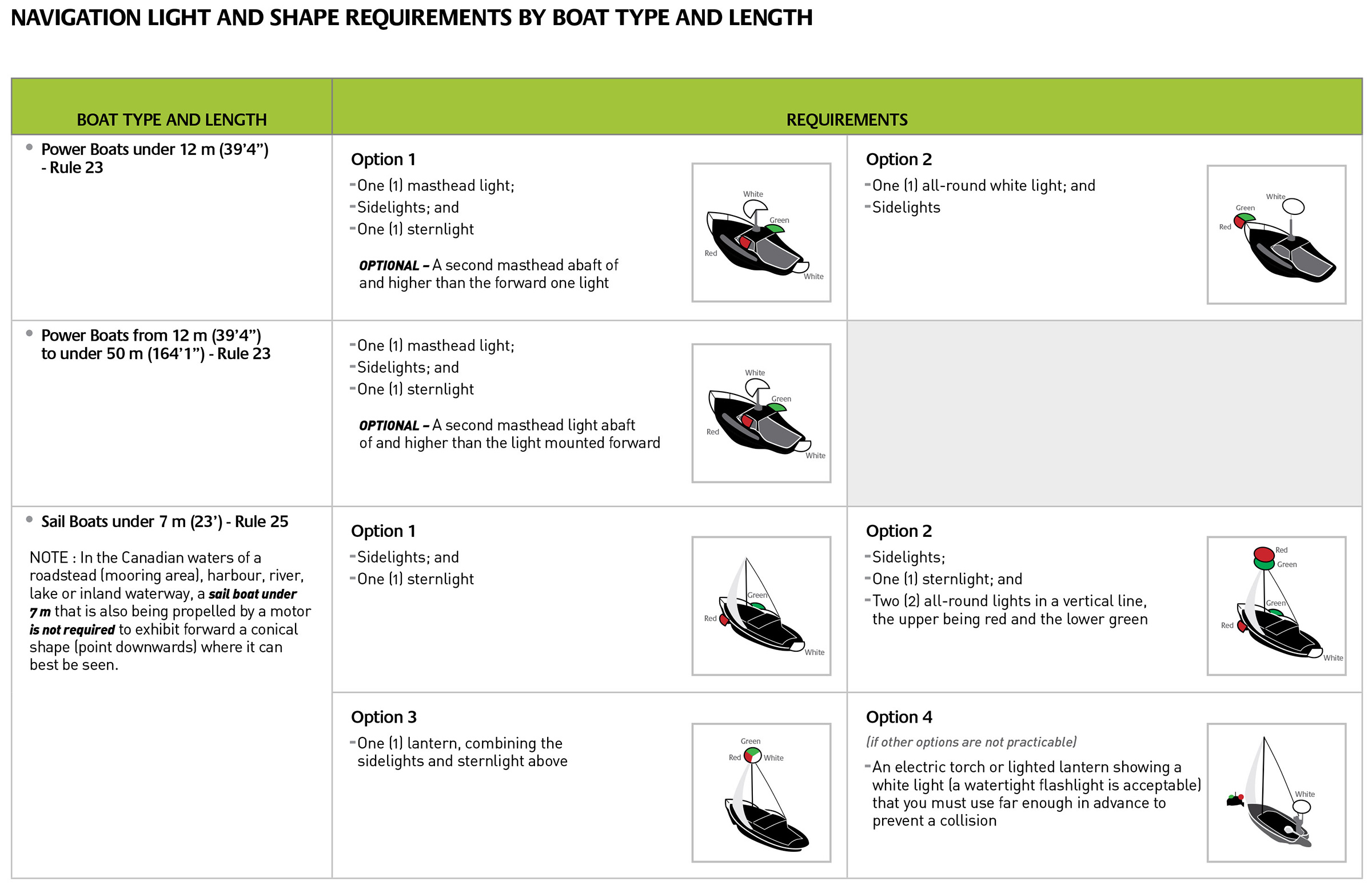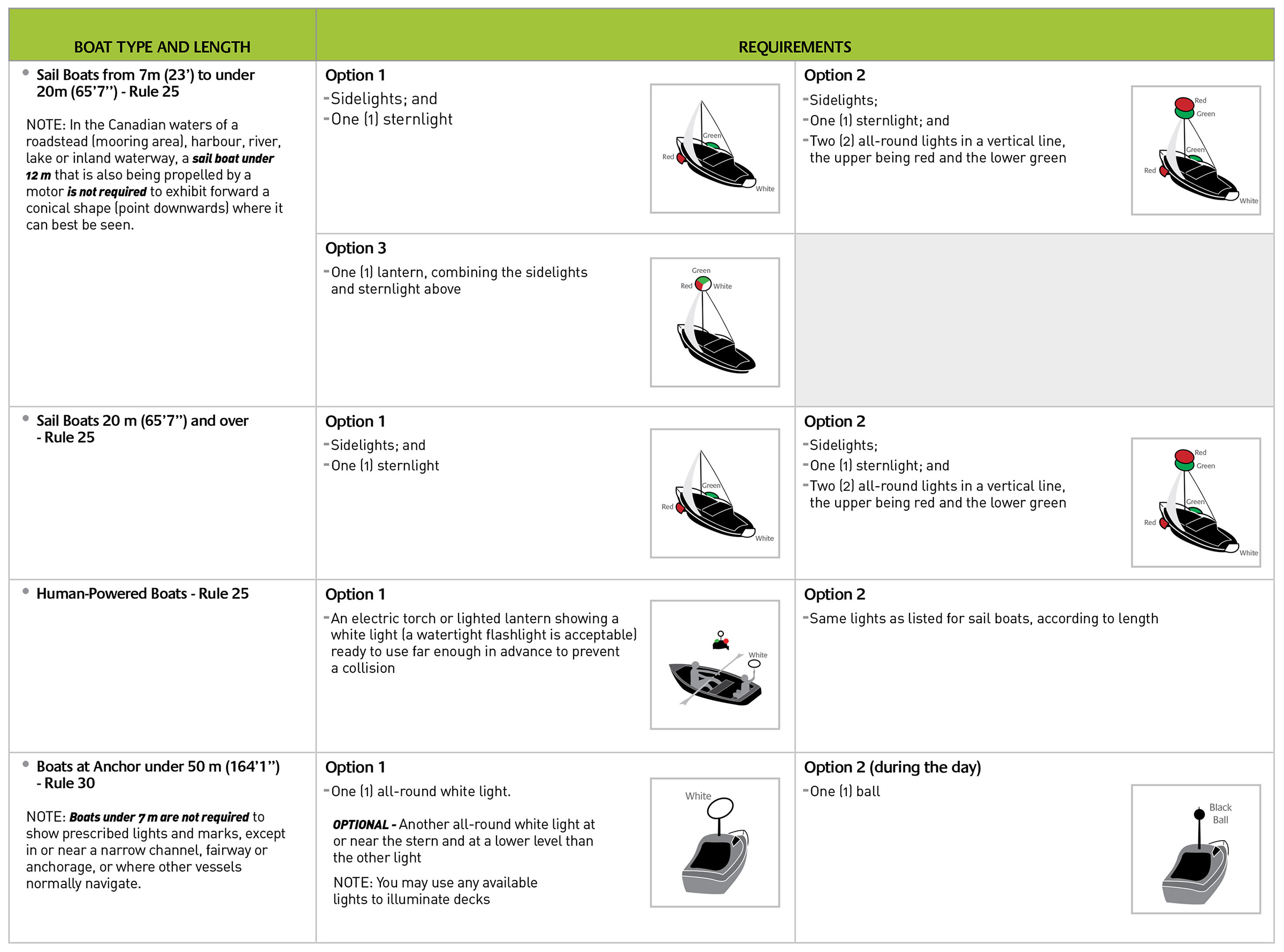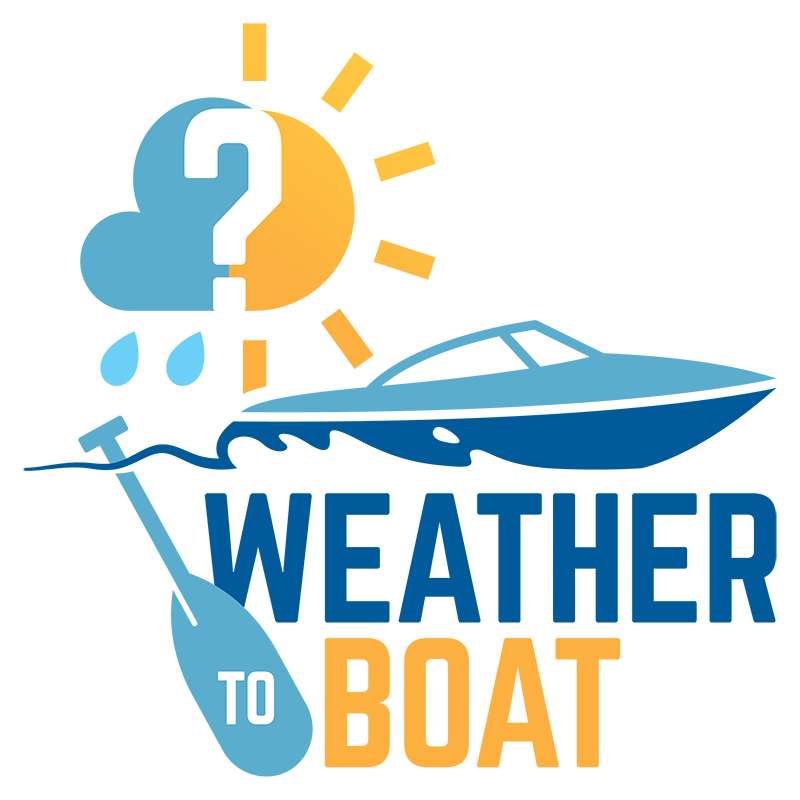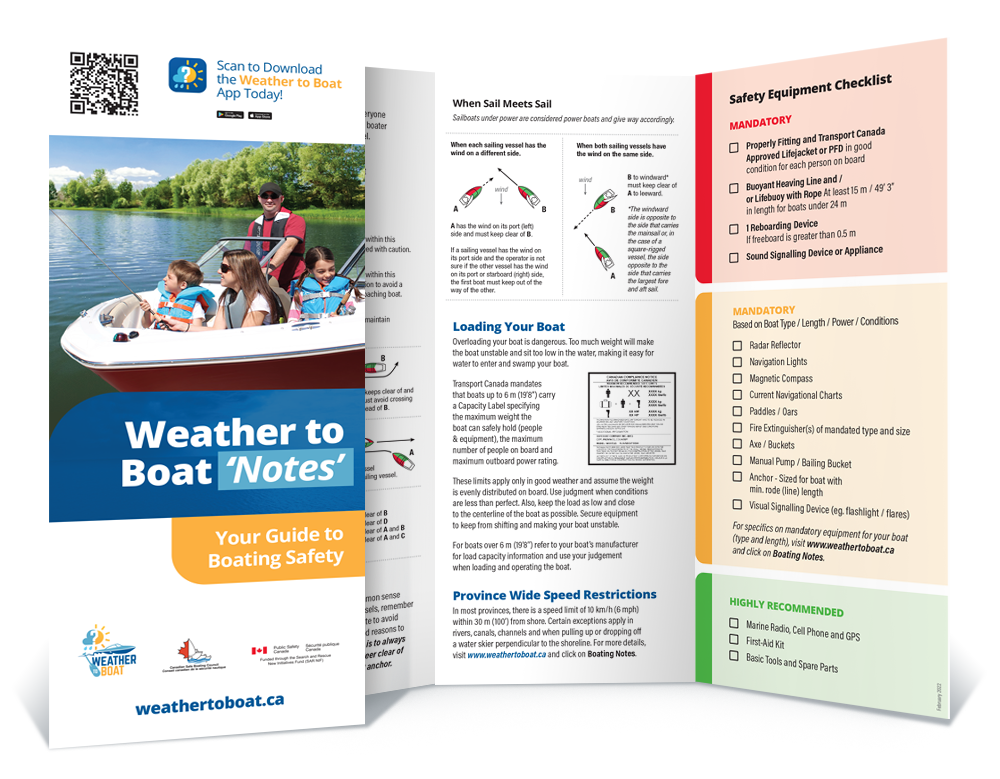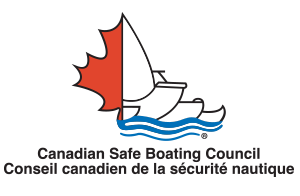Navigation Lights
Navigation lights help prevent collisions by making your vessel and its direction of travel more visible to others. Vessels near you will make decisions based on the information your lights provide. The navigation lights on other vessels can help you tell the direction they are moving or whether they are at anchor or engaged in some other activity.
USEFUL DEFINITIONS
Masthead light
A white light placed over the fore and aft centreline of the vessel showing an unbroken white light over an arc of the horizon of 225 degrees. It must be fixed so the light can be seen from right ahead to 22.5 degrees abaft the beam on both sides of the vessel.
Sidelights
A green light on the starboard side (right) and a red light on the port side (left), each showing an unbroken light over an arc of the horizon of 112.5 degrees. Both lights must be fixed so they can be seen from right ahead to 22.5 degrees abaft the beam on its respective side. In a vessel of less than 20 m (65’7”) in length, the sidelights may be combined in one lantern carried on the fore and aft centreline of the vessel.
Sternlight
A white light placed as nearly as possible at the stern (back) of the boat, showing an unbroken light over an arc of the horizon of 135 degrees and fixed so the light can be seen 67.5 degrees from right aft on each side of the vessel.
All-round light
A light showing an unbroken light over an arc of the horizon of 360 degrees.
If your boat is equipped with navigation lights, they must work and meet the technical standards set out in the Collision Regulations. For example, you must:
-
Show navigation lights if the boat is operated after sunset or before sunrise and during periods of reduced visibility;
-
make sure your vessel is equipped with the proper lights for its size and purpose; and
-
verify that the lights are correctly mounted.
The following table lays out some basic requirements and options for navigation lights and shapes, based on the type and length of your boat. If you have a sail boat that is also equipped with a motor, you must meet the standards for both sail boats and power boats.
Read the Collision Regulations (referred to in each of the following categories) for more details. If you are fitting your own navigation lights, refer to the positioning requirements in the Collision Regulations (ANNEX I: Positioning and Technical Details of Lights and Shapes)
